Madoi Atelier: Discover the Art of Fermented Food
Jan 28,2021
Madoi Atelier: Discover the Art of Fermented Food
Jan 28,2021
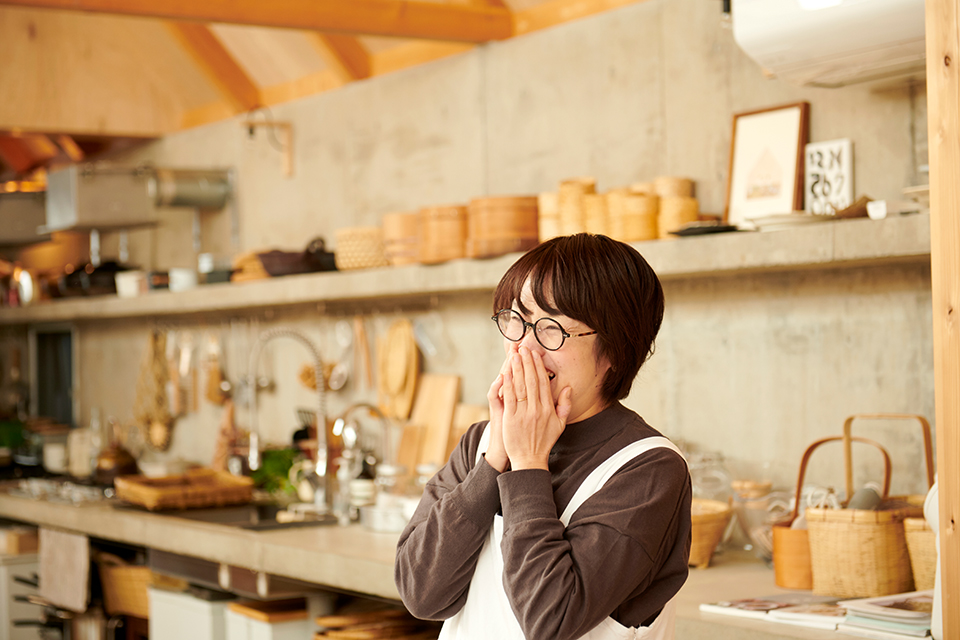

In the city of Shizuoka in Shizuoka prefecture is a food atelier/fermented food classroom called Madoi that attracts students from all parts of the country. Tsujimura Madoka, a fermented food specialist, runs Madoi. Since its opening eight years ago, Madoi has seen an unbroken stream of students, ranging from high-school students to people in their 80s, join Tsujimura’s cooking classes. We visited Tsujimura in Shizuoka to talk to her about why she became fascinated with fermented foods and the secret behind the popularity of her classes and workshops.
A short walk from Shizuoka Station brings you to an impressive building with a triangular roof and a white shop curtain. This is home to the food atelier Madoi. Upon entering, you find a space much like a stylish restaurant, with high ceilings, beautiful stream of natural light, corners and tables neatly decorated with seasonal flowers, and ornately arranged dishes and cooking utensils.

On the day of our visit, Tsujimura had been teaching a cooking class on making, eating, and learning about fermented food and had just seen her students off. She greeted us cheerfully, with no sign of fatigue from having just conducted a class.

“At Madoi, we hold cooking classes based on the theme of fermented foods made with vegetables and grains. We also use cheese and other ingredients, so we are not strictly about vegetarian cooking. I use this as our theme, however, because I personally love vegetables and because I want to show people that with the power of fermentation, you can prepare such delicious meals with just vegetables and grains.”
As Tsujimura says, the classes use vegetables and grains as ingredients. And paired with these are fermented seasonings made with koji [rice malt], such as amazake [a sweet drink made from fermented rice], sakekasu [saké lees], salted koji, soy sauce koji, and miso.
“It’s my belief that fermented foods act much like soup stock. Even if you don’t use granulated dashi or consommé stock, fermented foods contain plenty of the umami flavor that Japanese people find delicious. I especially use miso very often. Dishes that I make with my homemade miso taste incredibly delicious, and I surprisingly never get tired of miso, even if I use it every day.”
The dishes on Madoi’s menu all feature Japanese fermented seasonings, but they cover a wide range of food categories, both Japanese and Western. For example, the menu on our day had four items: Veggie gratin with sakekasu risotto, deep-fried okara [tofu pulp] konjac and carrots, sakekasu tartar sauce, and sakekasu chocolate cake.
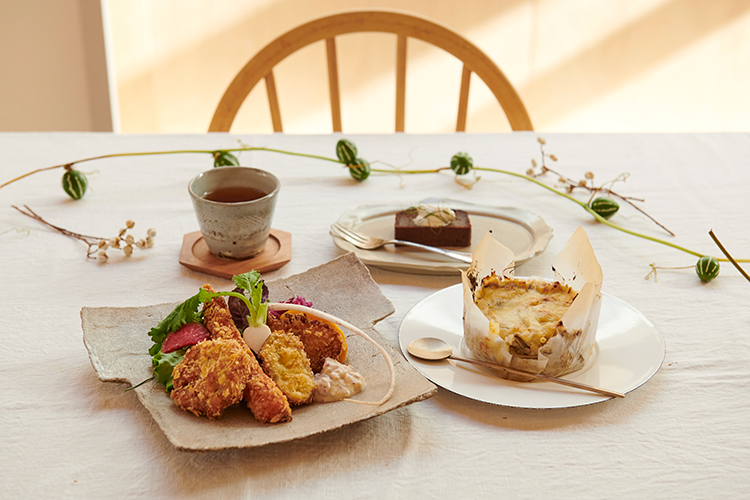
“For the veggie gratin with sakekasu risotto, miso is used in the risotto and sakekasu and miso are added to the béchamel sauce made with soy milk to bring out the umami. We also used sakekasu in the batter for the deep-fried okara konjac and carrots. This makes the deep-fried food very aromatic with a cheese-like flavor and umami punch that tastes great even when cold. And both the tartar sauce and chocolate cake are delicious and rich in nutrients because of the added sakekasu.”
Tsujimura sets time aside in her classes for a sit-down lesson.
“I do this because more than just cooking a dish, I want my students to cook with the knowledge of why the dish tastes good and what nutrients it has. Having a dedicated time set aside for a lesson may well be a trademark of my classes.”
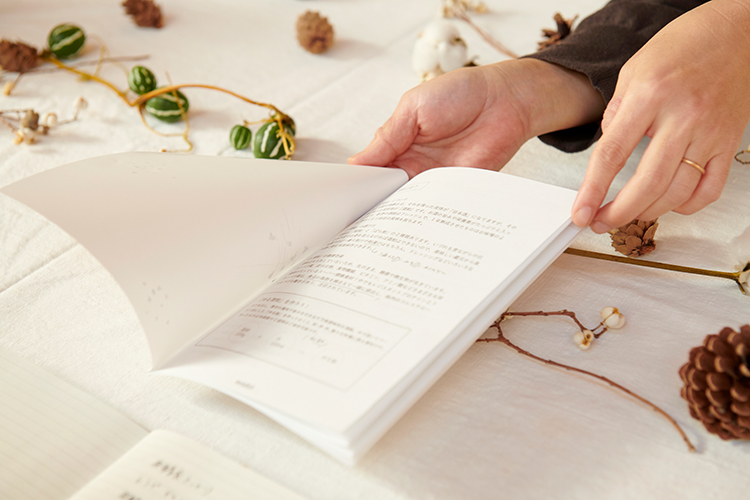
Another trademark of the dishes created in the Madoi classroom are how beautiful they look.
“I always select the ingredients and design the recipes so the vegetables look colorful. The order of presentation is very important as well. No matter how delicious a meal they prepare, if the presentation when cooking at home doesn’t look inviting, it will be a great disappointment to my students. This is why I teach them the order of presentation and tips on serving dishes, so that when they go home they can make a delicious-looking meal that pleases their family. And because we live in the age of social media, I show them the best angles to photograph from to make meals look delectable.”
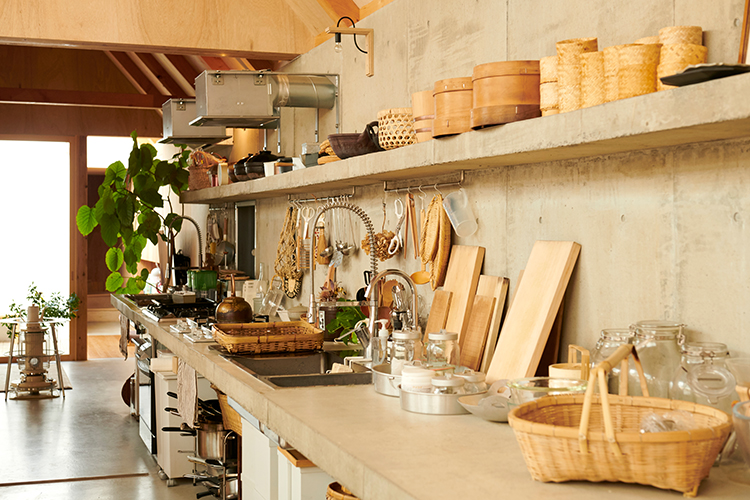
Tsujimura runs a popular cooking class that provides delicious food, knowledge of fermented foods, and a good sense of taste. But how did she become interested in fermented foods in the first place? When we asked her this, she told us about her activities prior to starting Madoi.
“I first got interested in food when I was in university. At the time, I was attending a university in the Kansai region with hopes of becoming an elementary school teacher. But my boyfriend (now husband) developed an intestinal disorder and was forced to restrict his diet.”
Tsujimura, who had always enjoyed cooking, did a lot of research because she wanted to make her boyfriend something delicious to eat within the limits of his dietary restrictions. One of the things she came across in her research was macrobiotics.
“Not many people knew about macrobiotics back then, and Shizuoka didn’t have a single macrobiotic restaurant in those days. I travelled to shops in Kyoto and Osaka to learn about vegetarian meals made with brown rice for him, and I got hooked on the scope of the subject.”

While attending university, Tsujimura obtained a macrobiotic certification through correspondence courses. Even after returning to Shizuoka upon graduation, her interest in food remained strong, so she decided to work in the food and beverage department of an apparel company.
“The company was planning to launch a restaurant, and at my interview I told the president about my passion for vegetarian food centered on brown rice. The president, however, was a meat lover and wasn’t very keen on my proposal. [laughs] But my enthusiasm seemed to win him over, and I started working there with the hope that over time, he’d come to see my position.”
Tsujimura explained that at the company she was involved in starting up several restaurants, including an organic café, as well as in menu development. This work furthered her interest in food. She also learned how to create a space that is inviting to women, how to fashion a menu, and how to make food look tastier and more beautiful.
“A lot of my ideas were incorporated in the menus, such as salad bowls with brown rice. Since we were an apparel company, my supervisors were very particular about the food looking beautiful and stylish, so I think I was able to hone my skills in that area as well. I was also involved in restaurant design, so I learned many things such as creating an impressive entrance, comfortable table arrangements, and useable and efficient kitchens. I’m able to put to good use of all those lessons here.”
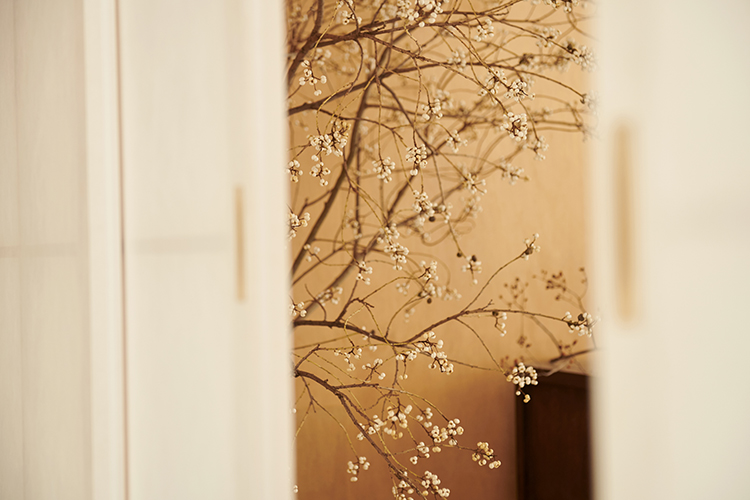
A turning point came for Tsujimura after working for about 15 years.
“My father died, but I was too caught up in my work to be there for his final days. That’s when I realized I needed to make a fresh start, so I decided to quit my job. Then I got married to my long-time boyfriend and we were blessed with a child.”
Tsujimura had a first-ever experience during her pregnancy. She suffered from severe morning sickness and was unable to eat.
“Eating, for me, is what makes life worth living. However, I couldn’t keep anything down. I was extremely distressed, stressing out over questions like ‘What is morning sickness? What is eating?’ Even though I couldn’t eat, I wanted to provide nourishment to the baby in my belly. After a lot of fretting about what to do, I remembered amazake.”
Amazake, which is called the drinkable intravenous drip, is used in macrobiotics, so Tsujimura reckoned it had to be an efficient way to get nutrients. Despite her idea, she was not fond of the taste of amazake.
“I had never enjoyed drinking amazake before, but I felt compelled to drink it due to my condition. So I set about trying different ways to make it taste better. I tried all kinds of things, like drinking it with soy milk and mixing it with fruit. I think the reason I didn’t give up was because I had been developing menus for 15 years, so I was confident I could find a way to make it taste good.”
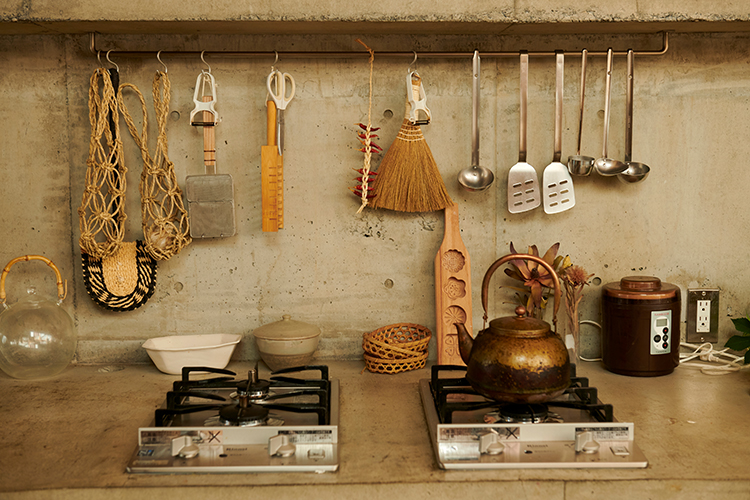
During her investigations, she gradually noticed and began to like the deliciousness that only amazake has. Over time, she started to use the drink in simmered dishes and other cooking. And simultaneously, though amazake, she got more interested in fermentation and koji, which she had no knowledge of before.
Her child was born without issue and new days began.
“Raising a child was busy work and took most of my time. I had been an outgoing person meeting people every day and working energetically, so it was hard for me to spend all of my day interacting with just my daughter. She wasn’t a good sleeper, so I was up at night a lot. Thinking back, I realize I must have been exhausted both physically and mentally. I was driven by the thought that I wanted to do something and to make some time for myself. However, I didn’t want to work in a café again. While I was deliberating what to do, I happened to spot a newspaper ad for a correspondence course for fermentation specialists.”
Tsujimura jumped at the chance to enroll. And she found herself totally engrossed in the course.
“I was only sleeping a couple hours a day, so my mind had to have been blurry. But every time I started studying, I was able to concentrate with clarity. I think I was looking for just a few hours in my day that were different from child-raising.”
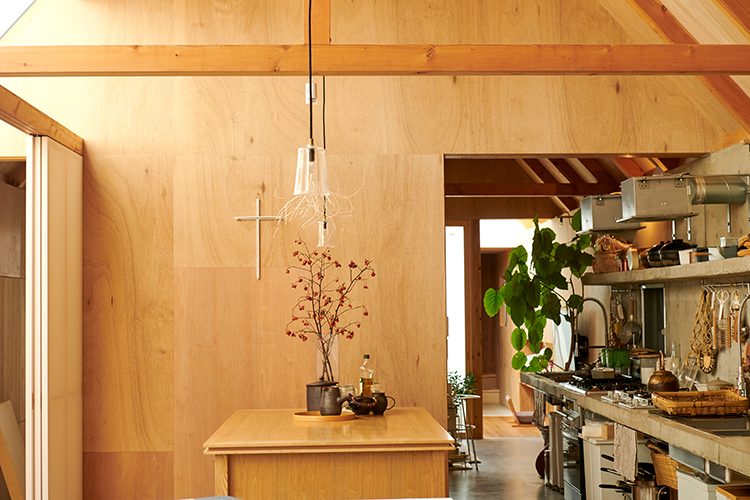
As she studied fermentation, she recalled her own past dream of becoming a teacher and resolved to start classes.
“It was exactly eight years ago now that salted koji and similar things started to become a trend. People weren’t as interested in fermented foods as they are today, still I rented space at a local café and held a weekly class with the name ‘fermented foods’. I started by teaching how to make salted koji and then added how to make soy sauce koji, amazake, miso, and other fermented seasonings.”
Tsujimura put all her previous knowledge and skills into her classes: the joy of teaching, knowledge of fermentation, development of delicious menu offerings, and beautiful and stylish visuals. Everything that she had accumulated in her life she made full use of. As a result, word of her classes soon spread and not long after she began teaching, lots of people from other prefectures began showing up in her classes.
“I think I was very fortunate. My family was the catalyst for everything, not just starting my career but also quitting my job and getting into fermented foods. So I’m extremely grateful to my family.”
Tsujimura says she changes the class’s menu every month and in eight years has never taught the same menu twice.
“I have a bit of a stubborn streak. [laughs] I have many students who come every month, so I feel I have to meet their expectations and come up with a new menu each time. This way, I’m not just outputting information but also taking in information [to create new menus] with the wish that I can teach everyone with fresh enthusiasm.”

The classes started out once a week in a café, then moved to a space in a renovated house, and a year ago relocated to their current place.
“Before constructing this building, I told the designer that I wanted it to be a house where bacteria are cultivated. The triangular roof was designed in the image of a saké brewery. We did not use cloth on the walls to avoid using chemically-treated building materials and to let the wood breathe. My dream is to make this a place that will last for 100 years. I hope to grow with the house, like fermenting without pressure or stress, and even when I’m an 80-year-old grandmother, I would like to make fermented food here and tell everyone about it.”
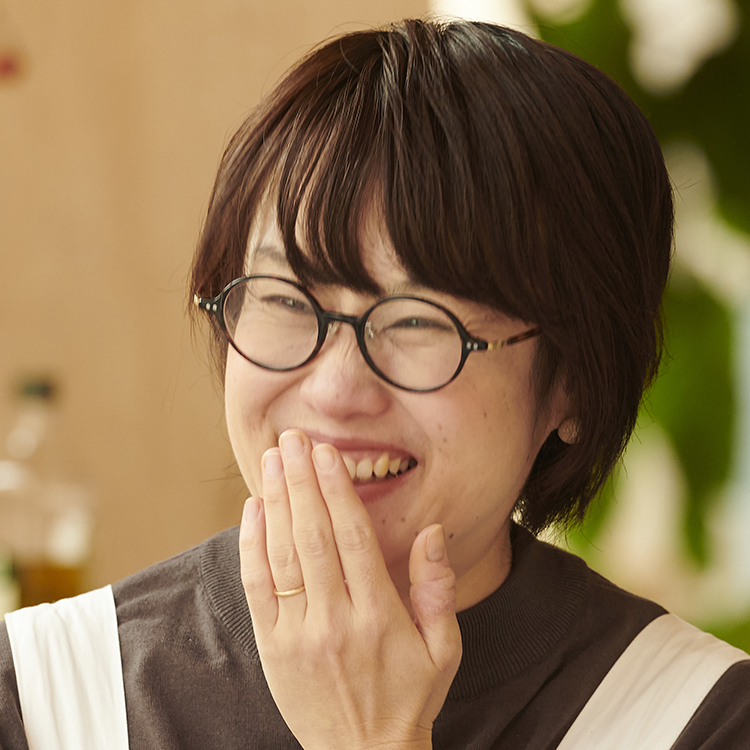
Fermentation specialist and owner of the Madoi koji cooking school
Fermentation specialist and owner of the Madoi koji cooking school
Tsujimura set up her own business in the city of Shizuoka after working for over 15 years launching several organic café / bakery / apparel stores and developing store menus. She started studying fermented food while pregnant and earned a fermentation specialist certification. She opened the Madoi food atelier, running fermented food cooking classes, study sessions, and workshops on making, eating, and learning about fermented foods. She also provides catering and food stylist services. She has written the books Fermented Foods with Seasonal Vegetables and New Fermented Foods.
https://madoi-hakkou.com/